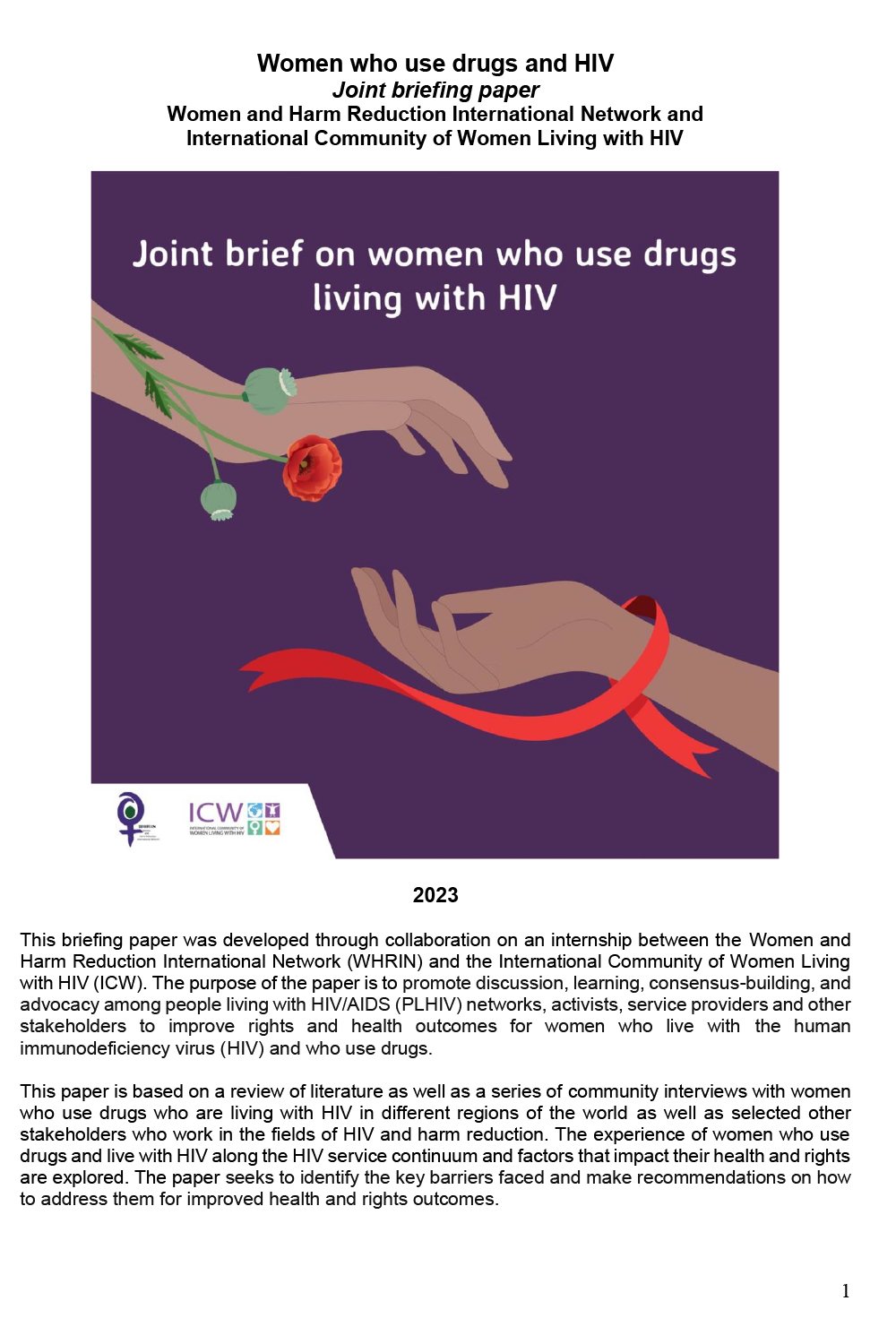It is a burden to be a woman in this patriarchal country, and even more of a burden if you are a woman who uses drugs living with HIV.
(Indonesia, community interview, Nov 2022)
Women who live with HIV and use drugs face significant barriers to realising their basic health, rights and safety due to stigma, discrimination, sexual and gender-based violence (SGBV), criminalisation, and imprisonment. Women who use drugs are especially at risk of HIV transmission while health and social services such as harm reduction services, HIV care continuum services, SHRH services, and others are rarely adapted to the unique needs and intersecting oppressions experienced by women living with HIV who use drugs. Women who use drugs are at higher risk of acquiring HIV and viral hepatitis as well as sexually transmitted infections (STI) than the general population.
1 Women make up at least 20% of the estimated 11.3 million people who inject drugs,2 yet calculations of the population size of women who use drugs are very likely underestimated given the lack of adequate services, pervasive marginalisation and related gaps in data available. People who inject drugs are 35 times more likely to contract HIV than those who do not, and HIV prevalence among women who use drugs is higher than among their male counterparts. One study showed that the pooled HIV prevalence among women who inject drugs was 13% (compared with 9% among men who inject drugs) based on data reported by 30 countries.5 Numerous studies demonstrate that criminalisation, gender inequality, stigma and lack of services sensitive to their needs, all contribute to increased risk of HIV transmission among women who use drugs.6,7,8,9 These factors are compounded for women who use drugs who also engage in sex work.
